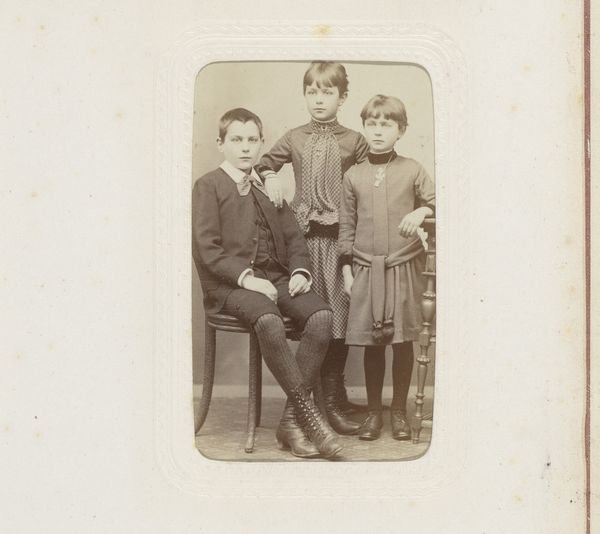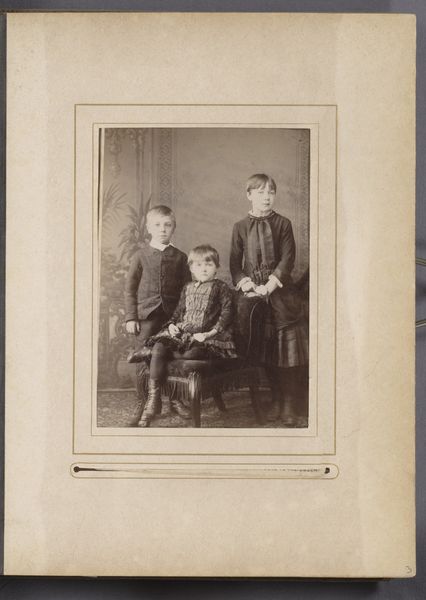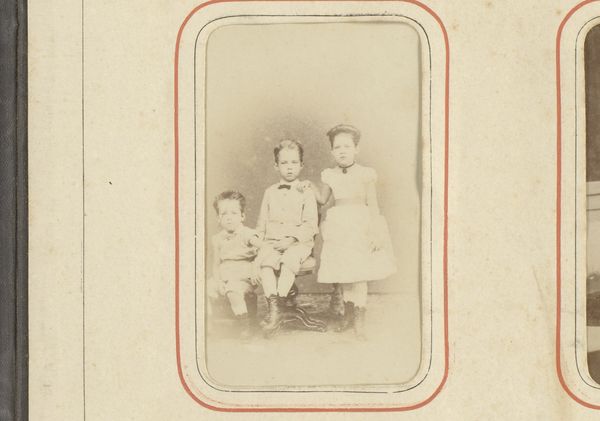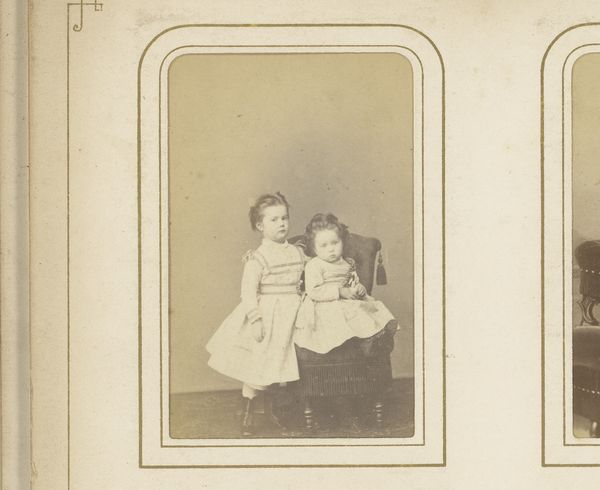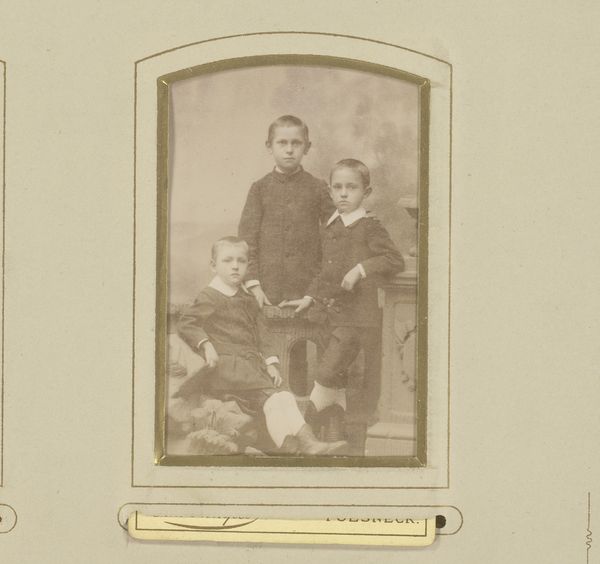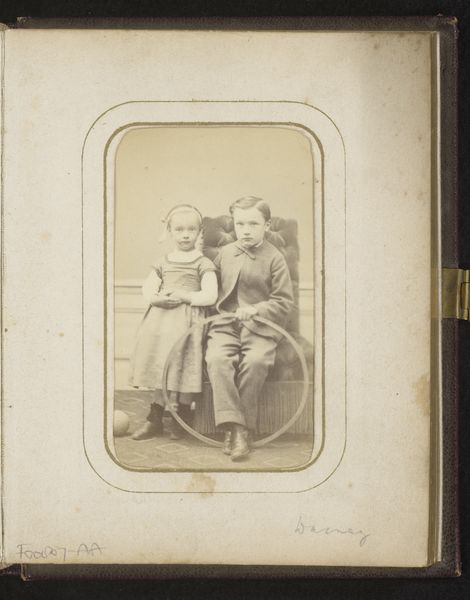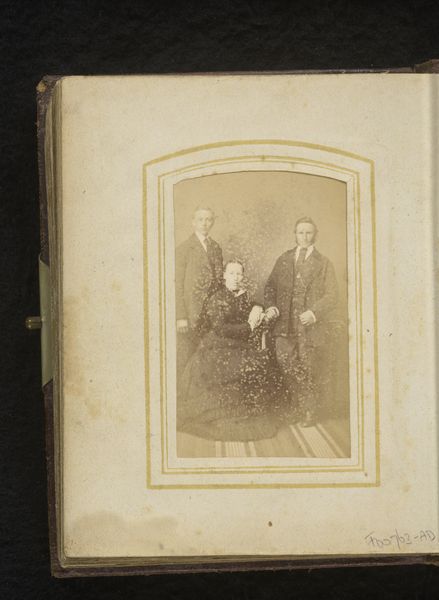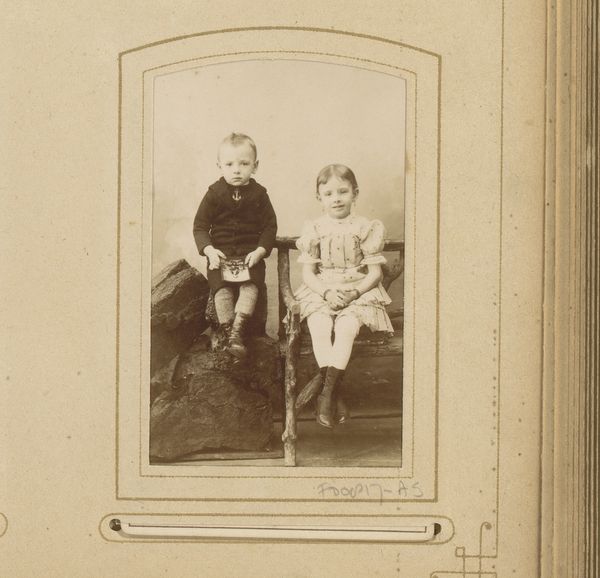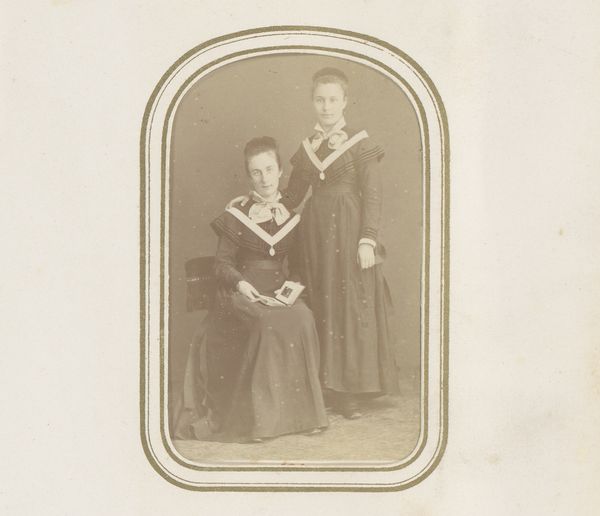
daguerreotype, photography
#
portrait
#
aged paper
#
toned paper
#
daguerreotype
#
photography
#
historical photography
#
genre-painting
Dimensions: height 83 mm, width 50 mm
Copyright: Rijks Museum: Open Domain
This photograph of three children with a rifle, stick, and hoop was taken by Jules Géruzet sometime in the mid-19th century. Though the process to create this albumin print seems straightforward, the labor required was extensive. First, the photographer coated a sheet of paper with light-sensitive emulsion made from egg whites, silver nitrate, and other chemicals. The negative, likely a glass plate, was then placed in direct contact with the paper and exposed to sunlight. As the image gradually appeared, the photographer would carefully monitor the print, removing it from the sun at just the right moment to achieve the desired contrast. The warm sepia tone is a result of the albumen and the developing process. This method of photographic printmaking made images widely accessible and turned photography into a burgeoning industry. While now we can snap pictures on our phones in seconds, images like these remind us of the labour, skill, and material processes that went into early photography.
Comments
No comments
Be the first to comment and join the conversation on the ultimate creative platform.
